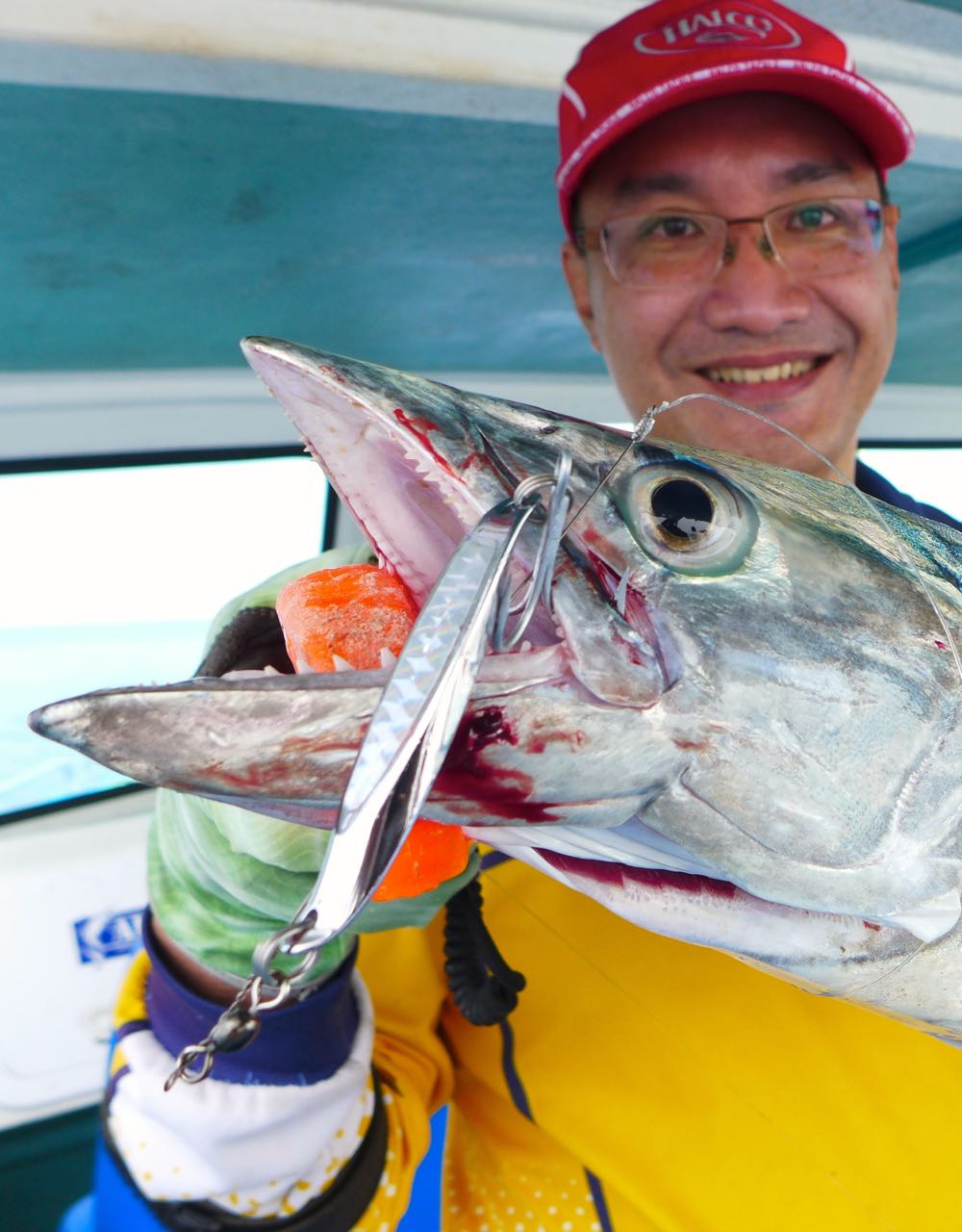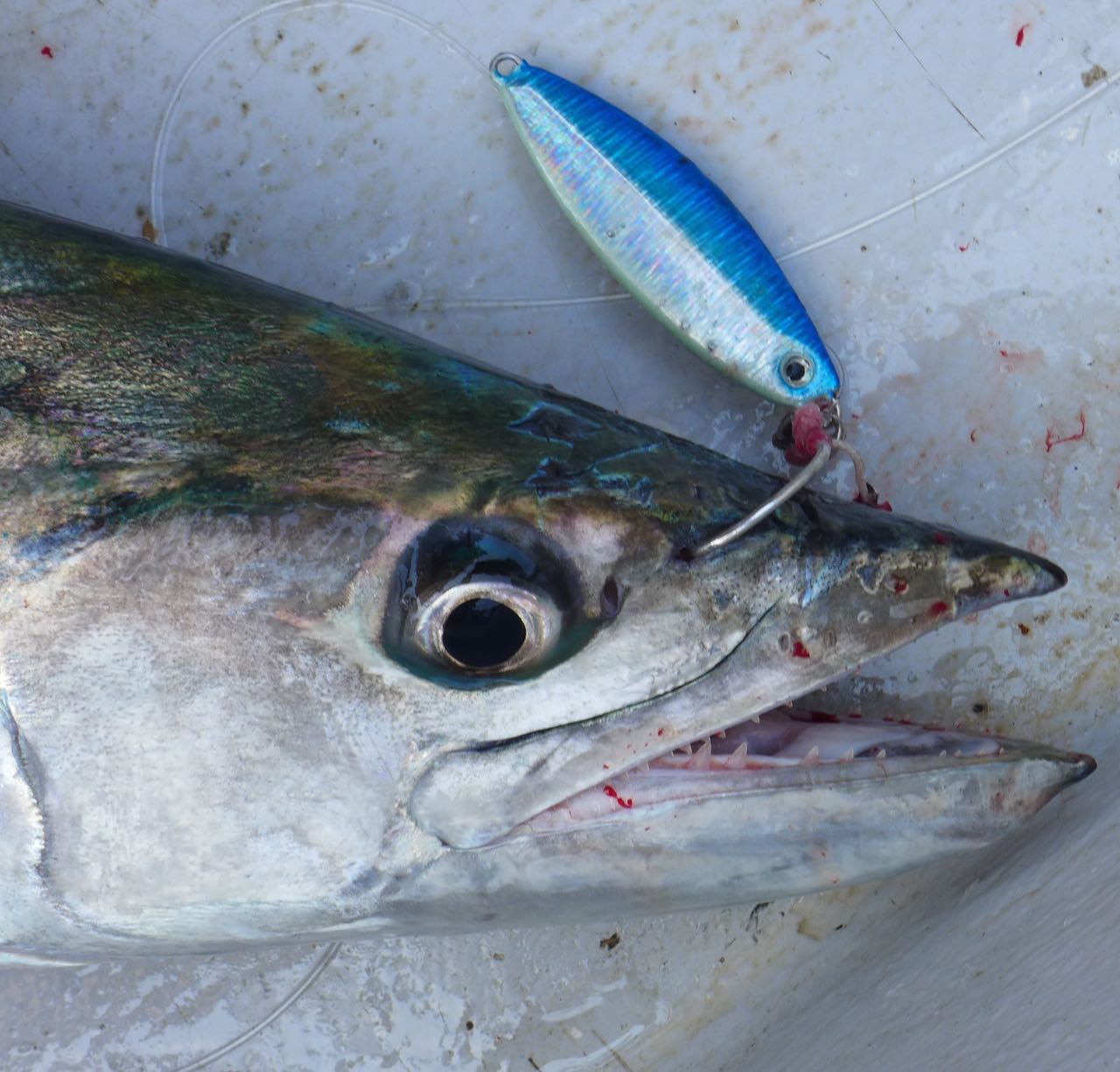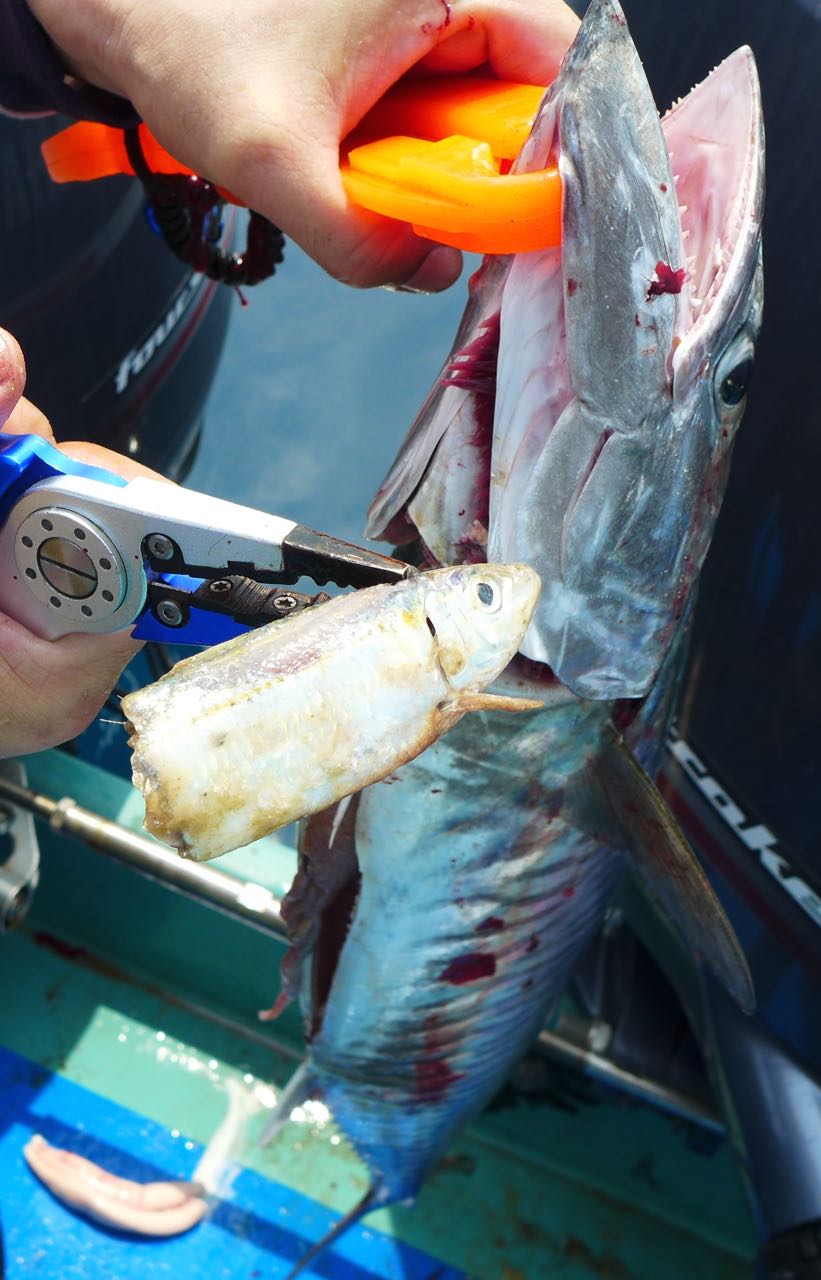
Lure
Casting & Jigging for Tenggiri Batang (Narrow-barred
Spanish Mackerel)
By Christopher S.G. Tan
Casting lures for tenggiri works well where the tenggiri often congregate or pass through. Boats often anchor or tie off buoys in such places to cast or jig for pelagics. I find that tenggiri are often cruising or patrolling around the FADs, so casting to the periphery of the FAD often results in a tenggiri hook up.
Reefs that hold baitfish are also good places to hunt for tenggiri. Other places where the seabed has ridges or channels that cause current upwellings or confluences of currents that cause the baitfish to gather there will also attract tenggiri.
In wide open water you can also find tenggiri roaming around. They will be following the schools of baitfish that are moving in the open ocean. The best way of finding them is to find their food - the schools of baitfish. Birds are a good indicator of the baitfish. The predators will drive the baitfish to the surface, trapping them against the surface while the predators circle them to pick them off. The birds in turn can now feed on these small fish.
A shiny chrome metal slice that casts like a rocket works very well where the tenggiri feeds on ikan bilis (anchovies). I like to use the chrome Halco Twisty 30gm as it casts far easily and is relatively unaffected by windy conditions. Its size too similar to that of the ikan bilis. It also casts far, sinks well and can be retrieved super-fast while not blowing out of the water, an essential factor to catch tenggiri.
An example of how I use this metal lure is casting outside FADs when the boat is secured to one of the many FADs off Kuala Rompin or Pekan off the East Coast of Peninsula Malaysia. If there are any tenggiri patrolling around the FADs, I will often get a tenggiri within the first few casts.
By varying the sinking time of this metal 30gm twisty, you can cover the different areas of the water column. So work the water column at different depths. I mostly get the strikes around the top half of the water column, but there are times I have gotten a tenggiri strike shortly after beginning the retrieval just off the sea-bed.
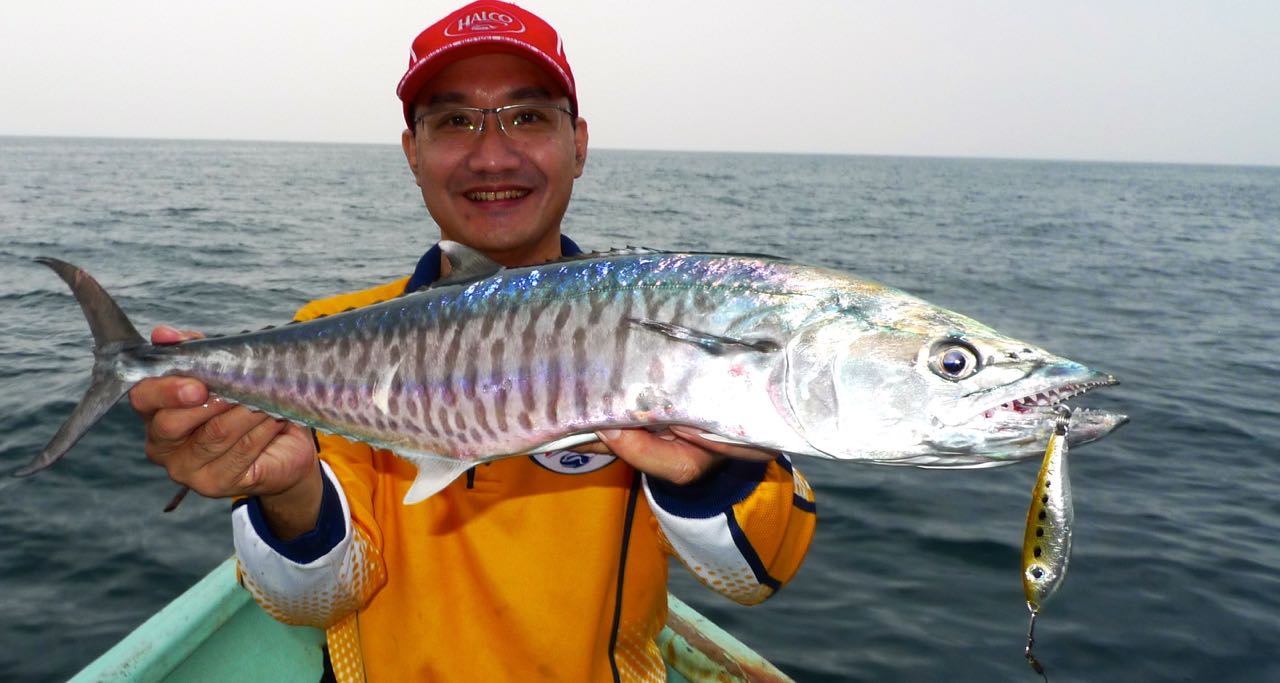
These
40gm shiny Halco Outcast metal lures works well when one is
burning it through the water or jigging them.
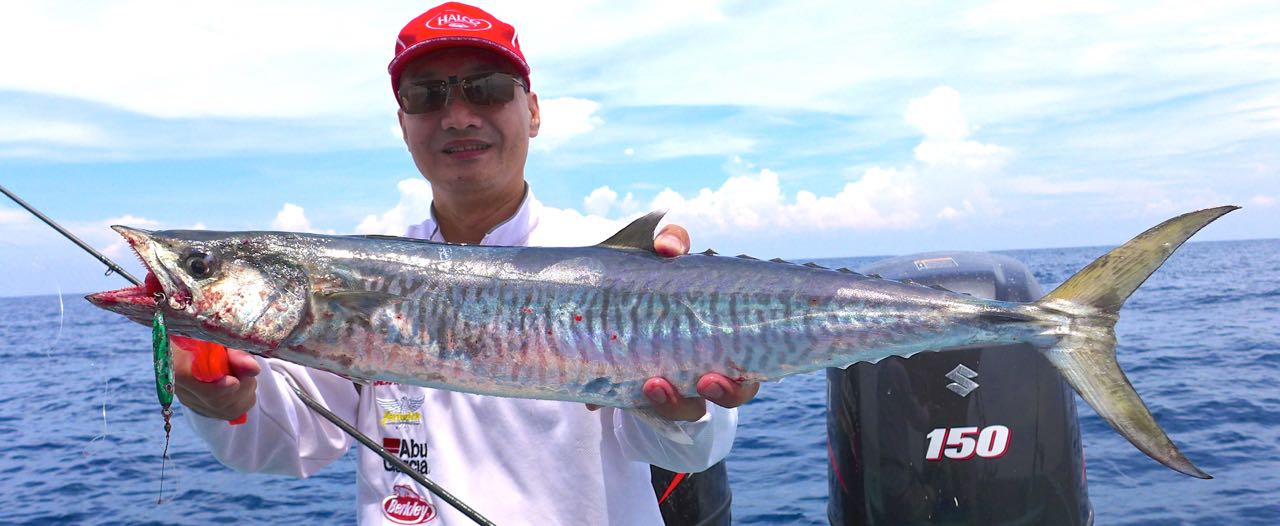
For tenggiri, the retrieval speed that seems to work best is fast! Therefore reels with high retrieve speeds of around 90-100cm per crank or higher will be more likely to get hits. I have been successfully using the Abu Revo Black 9 which has a 93cm retrieval rate (other high speed reels like the Abu Revo Rocket series will work well too). I just do a straight crank, burning in the metal slice as fast as I can.
Jigging is great for working through the water column, especially deep water or mid-water. Techniques for jigging would vary from rapid fast jigging or fast long jigging strokes. Occasionally the slow jig will work too.
Casting crankbaits that match the size of the larger forage like selar, tamban or kembung work well too. Like other methods, casting them where the baitfish are would work best. This is often over shallow reefs, outcrops, mounds or current upwellings where the baitfish are holding in shallow waters within the working range of the crankbaits.
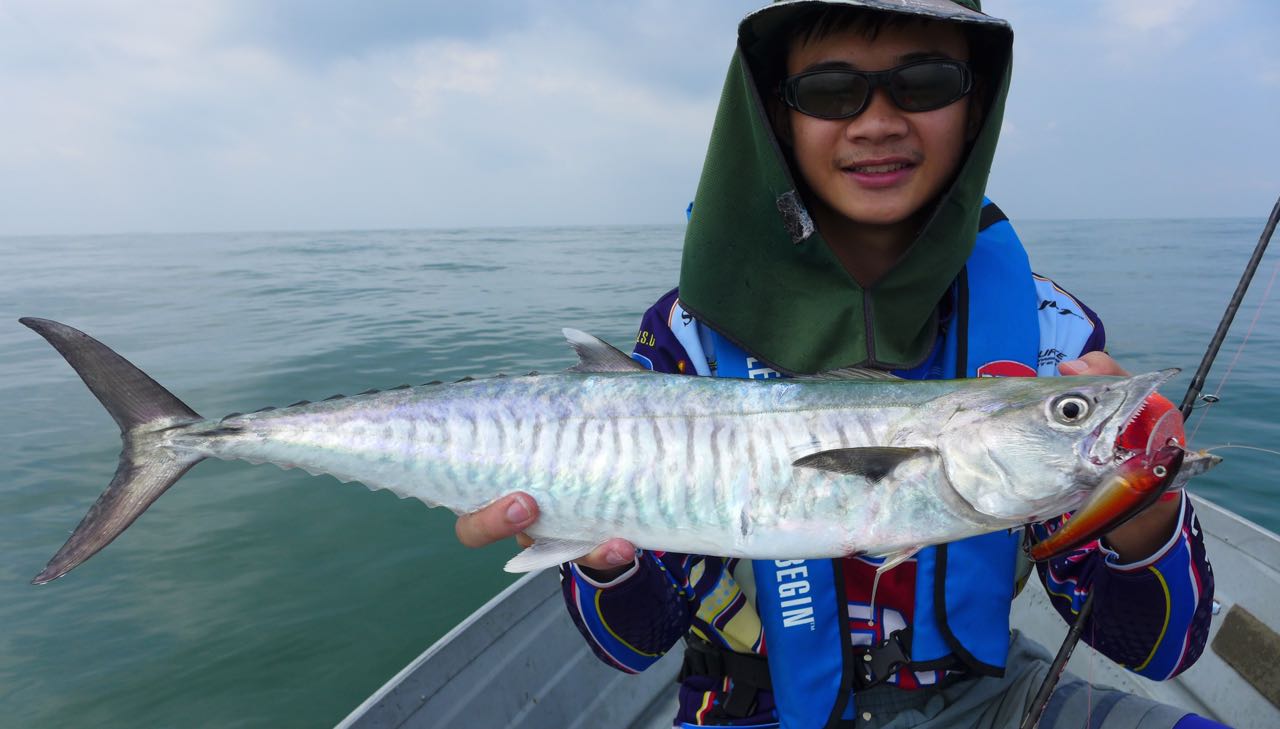
This
small Halco Hamma 85 was cast over a shallow shoal with a
confluence of currents, catching a tenggiri batang.
I have also caught tenggiri batang when casting large lures like the large Halco Laser Pro 190 near the oil rigs off Sarawak before dawn. It was a satisfying feeling to retrieve the large lure, sensing its vibration, then feel it come to a sudden stop followed by the lure being pulled away by the tenggiri. All this was happening in the dark, with the slight gleam of the rising sun still below the horizon. The tenggiri would come and roam the open waters outside the rig structures before dawn looking for forage.
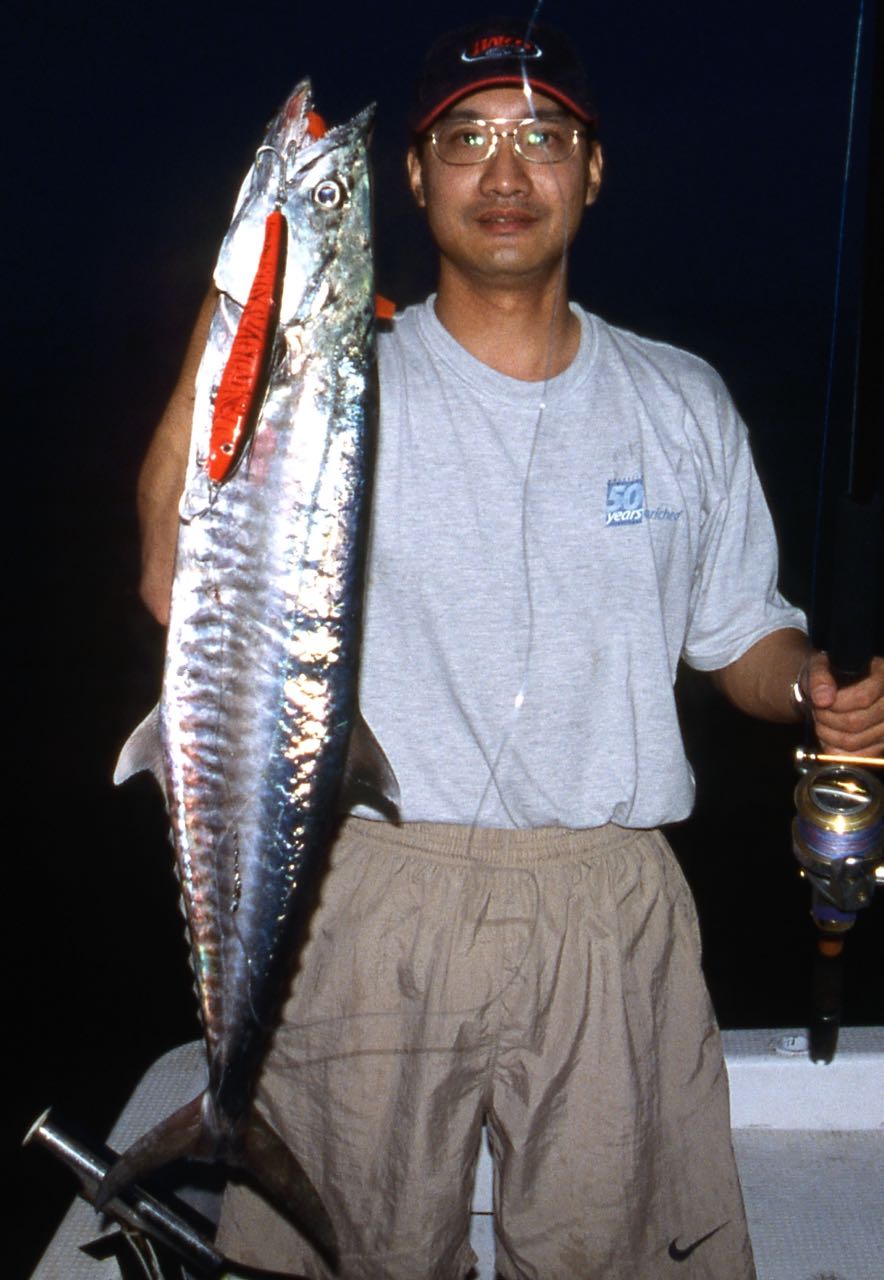
The Halco Laser Pro 190 is not only used for trolling but can be effective when cast too!
Return to the first part of this article covering lure trolling for tenggiri batang.
Conservation
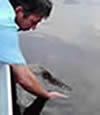
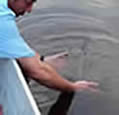
We need to protect and conserve our resources by practising catch and release of our sportfish and protecting the habitat of our fishes.
